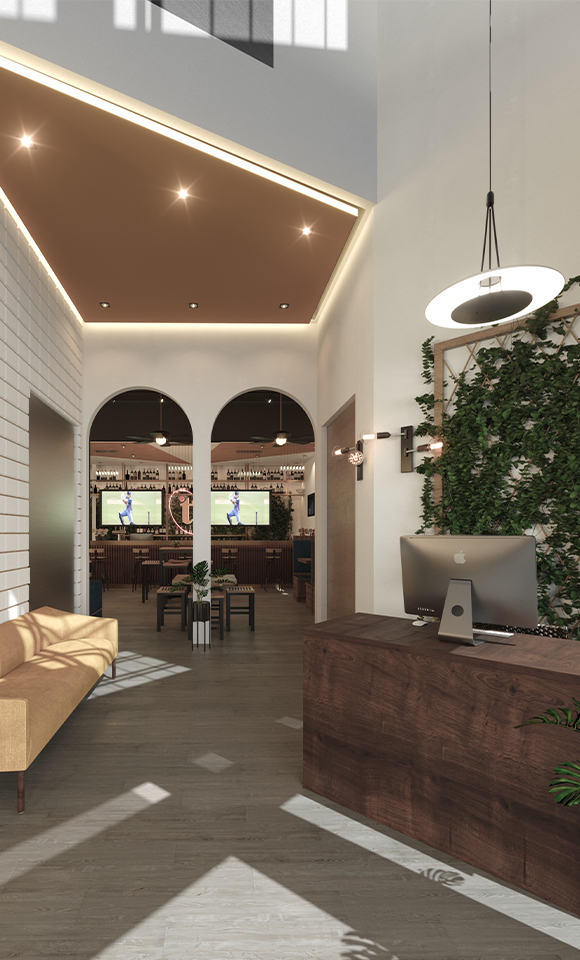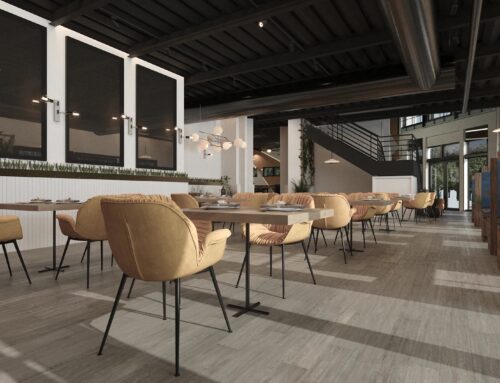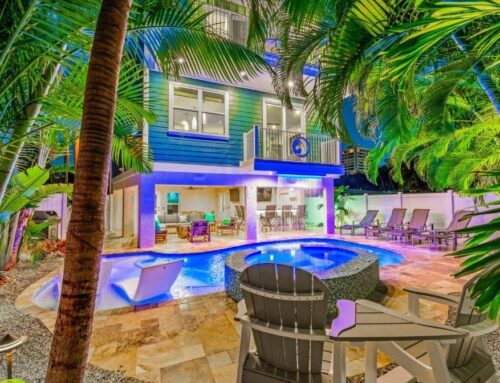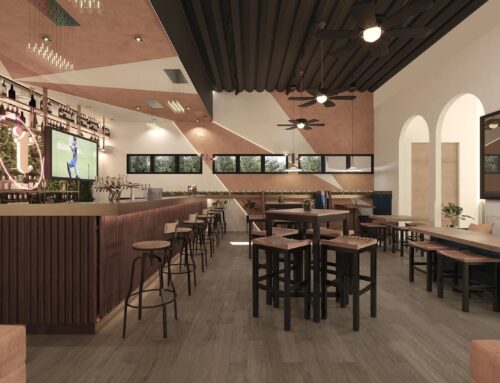Commercial architecture evolves just as residential design does, reflecting changes in culture, work trends, and shifting demographics. As business and property owners adapt to new societal paradigms, they are utilizing architectural firms to ensure that their buildings accommodate the changing needs of their visitors and tenants. From apartment buildings to shopping centers and office parks, commercial design trends are ever-acclimating in order to maintain lease rates. Halfway through 2023, we are seeing several notable trends involving materials, technologies, and changing aesthetic ideals.
-
Sustainability in Function and Design: As environmental concerns continue to infiltrate and inform many areas of our daily life, professional commercial architects expect to see more emphasis placed on sustainable building practices. This may include utilizing more energy-efficient materials and systems – but it could also involve integrating lush green spaces or water features into their campuses and finding innovative ways to add natural elements such as stone into interior layouts. Biophilic design incorporates plants, water, and natural light into a building’s interior and exterior design. It has gained significant popularity as employees demand more healthy and supportive environments to spend their days.
-
Flexibility of Workflow: The pandemic forever changed the way that both companies and their employees viewed the workplace. The “traditional” office space model has essentially given way to hyper-flexible work models that necessitate both adaptability and flexibility in commercial space design. Business owners are seeking new ways to provide shared workspaces that can accommodate different uses and activities, depending on who is in the office that day.
-
Comprehensive Integration of Technology: Commercial builders have been incorporating technology into their plans for decades, but the trend continues to evolve at the speed of new tech capabilities. The pandemic highlighted the need for more advanced telecommunications and video capability, and the new hybrid and flexible employment structures have created the need for workspaces that are generic enough for any purpose – but have the advanced wiring and network security to handle a wide range of potential devices. From intelligent building systems to virtual reality and AI, technology will undoubtedly play an increasingly significant role in the design and function of commercial architecture for years to come.
-
Mixed-use Urban Developments: Although not an entirely new trend, the demand for mixed-use projects in downtown and urban areas continues to grow. Commercial architecture in these areas is called to blend residential options, retail stores, and office spaces into a single building or development, establishing a more dynamic and diverse community. Some cities are moving towards buildings where people can live, work, go to the gym, and shop for groceries – all without getting in their cars.
Most of these trends reflect society’s move towards a better work-life balance, an ideal we didn’t even know we needed until the pandemic shifted priorities for many. Employees and tenants are looking for spaces that inspire beauty and serenity, provide the ultimate in technology and flexibility, and are sustainable and responsible. Commercial architecture is evolving along with us, and we think that is a great trend.
At JTL Studios, we know the importance of keeping up with the trends – but we also understand that nothing is more important than designing the building that works best for you and your needs. Call us today if your company wants to develop a new commercial space or needs to renovate and rejuvenate your current real estate. We are Sarasota’s premier architectural firm, blending an international perspective with our local Sarasota aesthetic to create a commercial property that will attract the clients and tenants you need.





